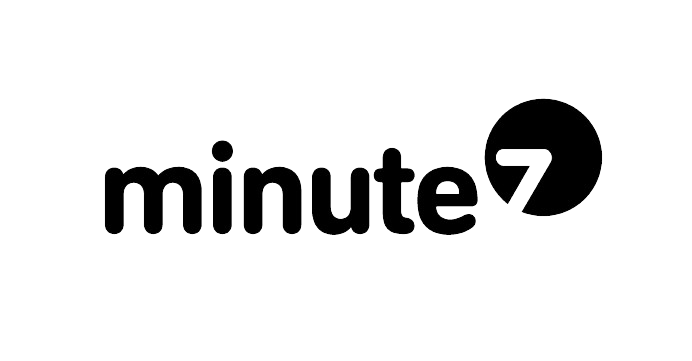
Expanding architectural projects on a global scale presents unique challenges including navigating diverse regulations, managing cultural differences, and overcoming logistical hurdles. As architecture firms venture into international markets, understanding and addressing these complexities become crucial for success. This article delves into the specifics of managing international architectural projects and offers practical solutions for overcoming these challenges, providing valuable insights for firms aiming to expand their footprint globally.
Navigating Different Regulations
Understanding and complying with international building codes, regulations, and local laws are integral to the success of architectural projects. Each country, and sometimes regions within a country, have their own set of building codes and regulations, which can make international projects particularly complex (source). Adherence to these regulations is crucial for ensuring safety and reducing long-term expenses, as they are essential from the very beginning of any building project.
However, the enforcement and violation of building codes can present major barriers due to the complexities and varying standards across different countries (source). In addition to understanding and adhering to building codes, it is also important to comprehend local laws, as they play a significant role in architectural practices. Architects are expected to perform their duties in accordance with accepted professional standards and practices, which vary based on factors such as the project’s location, size, complexity, and type (source).
To stay updated on regulatory changes, firms can engage with local authorities early in the planning process, hire professionals well-versed in local building codes and permit processes, and use pre-approved designs vetted for compliance (source). It’s also noteworthy that regulatory standards continue to evolve, creating new roles and connections in the industry (source).
Compliance with these regulations is crucial for protecting architectural firms. Implementing a compliance program can help identify key risks and establish company-wide protocols for legal and ethical standards (source).
Minute7 supports these compliance efforts through features like secure data storage and reporting. By providing a centralized system for tracking time and expenses, Minute7 helps architecture firms maintain detailed records necessary for legal and regulatory compliance. Furthermore, it aids in managing different regulatory requirements across international projects by offering an organized, accessible platform for tracking project-specific data.
Managing Cultural Differences and Communication
Cultural differences profoundly impact project management and client relations in international architectural projects. Mismanaging these differences can lead to misunderstandings, delays, and even project failures. For example, a study highlights that effectively managing cultural differences can significantly enhance project success and company reputation.
Effective communication and collaboration are vital when working across different cultures and time zones. According to a study, the construction industry often faces communication challenges due to cultural misunderstandings. Facilitating clear and open communication channels during the design and construction phases can enhance productivity and project outcomes.
To foster strong intercultural communication and teamwork, firms can adopt several strategies: * Invest in Cultural Awareness: Understanding and respecting cultural nuances is essential. For instance, recognizing the concept of ‘face’ in Middle Eastern cultures can help maintain positive working relationships (source). * Promote Diversity and Inclusion Training: Providing training sessions on cultural diversity and inclusion can prepare teams to interact effectively with international clients and partners. * Utilize Cultural Dimensions Theory: Geert Hofstede’s Cultural Dimensions Theory provides a framework to understand key cultural differences, including Power-Distance Index and Individualism vs. Collectivism. * Embrace Effective Communication Tools: Utilizing technology to bridge communication gaps can be beneficial. Video conferencing, collaborative platforms, and instant messaging can help teams remain connected despite geographical distances.
Organizations should also focus on establishing robust intercultural relationships. A PDF emphasizes the importance of strong communication strategies in managing a culturally diverse workforce and client base.
Minute7 can play a critical role in facilitating these intercultural interactions. By offering a platform for seamless time tracking and expense reporting, Minute7 ensures that architectural firms can manage their international projects efficiently. The centralized system allows teams to log hours and expenses from anywhere, fostering collaboration and transparency among team members, regardless of their location.
Overcoming Logistical Issues
International architectural projects often face numerous logistical challenges, including supply chain management, material sourcing, and on-site coordination. These challenges are compounded by infrastructure issues, delivery delays, carrier capacity problems, and compliance with government security regulations (source). Additionally, the supply chain’s impact on architectural design necessitates a reevaluation of traditional practices to enhance operational efficiency and customer experiences (source).
Technology plays a crucial role in addressing these logistical challenges. Advanced technologies such as automation, data analytics, drone technology, and the Internet of Things (IoT) have significantly improved logistics efficiency (source). Digital solutions, including real-time visibility, automated route optimization, and data-driven decision-making, have transformed logistics management (source).
Robust tracking and reporting tools are essential for efficiently managing project timelines and expenses. Construction project management software provides real-time data and comprehensive insights, helping managers make informed decisions and streamline operations (source). Effective project tracking offers complete visibility into every aspect of the project, allowing managers to monitor resources, teams, tasks, and milestones from a single platform (source).
To overcome logistical challenges, it is essential to integrate technology, understand the global landscape with local market knowledge, maintain a strong client experience, and adopt an integrated approach. Digital tools enable businesses to become more agile and flexible, and local connections can help minimize interruptions. Communication and commitment are key, especially if teams cannot visit site locations. An integrated approach that combines strategy, design, pre-construction, and delivery can resolve access and other hurdles early on in the project (source). Improving communication in logistics management can also help solve supply chain problems and increase efficiency (source).
Minute7 can be a critical tool in overcoming these logistical issues. The platform allows employees and contractors to efficiently track time and expenses from anywhere, providing a clear and up-to-date picture of project timelines and budgets. The data captured can be easily synced into QuickBooks for billing, reporting, or payroll purposes. This seamless integration can significantly streamline the management of international architectural projects, ensuring that they are delivered on time and within budget.
Leveraging Technology for International Success
As architecture firms navigate the complexities of international projects, leveraging advanced tools and technologies becomes essential for overcoming the multifaceted challenges they face. From regulatory compliance to cultural understanding and logistical efficiency, having the right solutions can significantly streamline operations and enhance project outcomes.
Minute7 emerges as a pivotal ally in this regard, offering robust time tracking and expense reporting features that cater specifically to the needs of architectural firms operating on a global scale. By integrating seamlessly with QuickBooks, Minute7 ensures that all financial data is accurately recorded and easily accessible, facilitating smooth financial management regardless of geographical boundaries.
The platform’s secure data storage and comprehensive reporting capabilities help firms maintain compliance with diverse regulatory requirements, providing a reliable system for tracking project-specific data. Additionally, the mobile app and user-friendly interface enable team members to log hours and expenses from anywhere, fostering effective communication and collaboration across different time zones and cultures.
Moreover, by providing real-time visibility into project timelines and budgets, Minute7 empowers firms to tackle logistical challenges head-on. The ability to synchronize data into QuickBooks for billing and payroll purposes further streamlines financial operations, ensuring that projects stay on track and within budget.
In conclusion, as architecture firms expand their reach globally, Minute7 offers indispensable tools that address the intricacies of international projects. By enhancing regulatory compliance, fostering intercultural communication, and streamlining logistical operations, Minute7 supports firms in their quest for global success, making it an invaluable component of their international project management toolkit.
For more information on how Minute7 can support your architectural firm’s international projects, visit Minute7.



